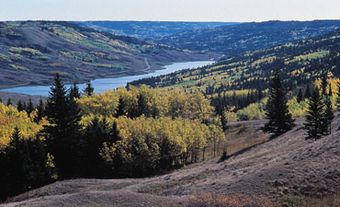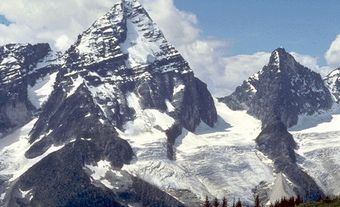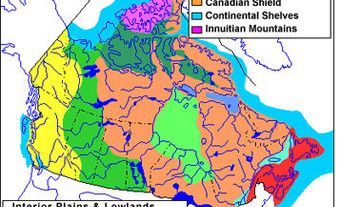Tide
Tide Although tides exist in the atmosphere and the solid earth as well as in the OCEAN, only the ocean tide reveals itself in everyday experience. It is seen as a regular oscillation in WATER levels and in speed and direction of ocean currents. Tides originate with the gravitational forces of the MOON and SUN (see ASTRONOMY).The Earth is actually not in orbit around the sun but around the centre of mass of the Earth-sun system. Since all parts of the Earth move in the same orbit, they experience the same acceleration, but only at the Earth's centre is this acceleration exactly balanced by the sun's gravitation. On the side near the sun, gravitation is greater; thus things (eg, water) tend to move toward the sun and away from the Earth's centre. On the side away from the sun, gravitation is less and things tend to move away from the sun and away from the Earth's centre. The unbalanced portion of the gravitation causes level surfaces to bulge outward on the sides of the Earth toward and away from the sun, and these 2 bulges pass around the Earth once each day as the Earth rotates on its axis. Earth is also in orbit around the centre of mass of the Earth-moon system; consequently, tidal bulges also occur on the sides of the Earth toward and away from the moon. Because the sun is farther away, its tidal effect is only 0.46 that of the moon. When the sun or moon are off the equator, one bulge will be N and one S of the equator, and the 2 will not be experienced equally, except on the equator. This imbalance causes the diurnal inequality in the semidiurnal tides. At new and full moons, the lunar and solar bulges nearly coincide, causing tides of large range, called spring tides. At the moon's first and last quarters, the lunar bulges fall near the solar hollows, causing tides of small range, called neap tides. Tides also tend to have greater range when the moon is closest to Earth (perigean tides).
The range of a tide is the vertical distance between high water and the succeeding low water. Flood is horizontal flow in the landward (upstream) direction; ebb is flow in the seaward (downstream) direction. Slack water is the short period of rest as the flow reverses from flood to ebb, or vice versa. The interval between slack water and high water or low water may vary from place to place, but in most coastal regions slack waters occur near the times of high water and low water. A tide is semidiurnal when it exhibits 2 high waters and 2 low waters in a lunar day (about 25 solar hours), diurnal when it exhibits only one of each. Most tides are intermediate, with 2 daily tides differing from each other in height and range, the difference being called the diurnal inequality. A tidal bore, a tumbling wall of water moving upriver with the advancing tide, is sometimes formed when the tide rises rapidly at the entrance to a shallow, gently sloping river. Bores occur in several rivers off the Bay of FUNDY, the best known being that in the Petitcodiac R, NB. A tide race is a rapid flow of water through a narrow passage, driven by the rising or falling tide at one end. The Reversing Falls at Saint John, NB, is a tide race, flowing in on the rising and out on the falling tide (see WATERFALL). A tide rip is a patch of rough water formed when wind-generated ocean waves run up against a tidal flow in the opposite direction. The waves pile up on each other, steepen and break in what can be violent turmoil.
While tidal forces originate in the gravitational influences of heavenly bodies, the tides themselves propagate as long waves, experiencing reflection and amplification or attenuation along their paths. Thus, the character of the tide may differ from that of the tidal forces at the same location. The large ranges in the eastern Arctic result from tidal energy propagated in from the Atlantic Ocean, and the large Bay of Fundy tide is the result of resonance in the Bay of Fundy-Gulf of Maine system. The latter tidal range, at times reaching over 16 m, is the most remarkable in Canada and probably the world. The tide at Victoria, BC, is seen to have more diurnal inequality than that at Halifax, NS, although both locations have nearly the same latitude and thus experience almost the same tidal forces. Because of these differences, tides can be predicted for a site only after sufficient observations have been obtained to define the local tidal character in astronomical terms. Small tides (about 5 cm) occur in the Great Lakes, and a tidal flow of up to one knot has been observed in Little Current Channel, Lk Huron. The study of tides in Canada began in 1893, when the Canadian Tidal Survey was established. Its first director, W.B. DAWSON, was responsible for setting up a network of tidal stations on the Atlantic Coast and in the Gulf of ST LAWRENCE, and for prompting tidal studies on the East and West coasts. The tidal-station network has continued to expand and is now maintained by the Department of Fisheries and Oceans. See also TIDAL ENERGY.

 Share on Facebook
Share on Facebook Share on X
Share on X Share by Email
Share by Email Share on Google Classroom
Share on Google Classroom


